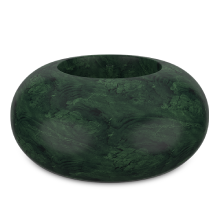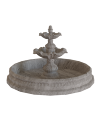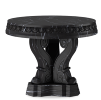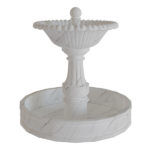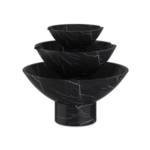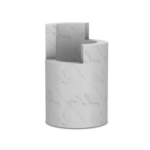August 25, 2023 Author: John Samuel
Comprehensive Guide to Testing Your Indoor and Outdoor Fountain for Leaks
Ah, fountains! A magnificent touch to any space. Whether it’s the gentle trickle in your living room corner or the majestic spray in your garden, fountains elevate the ambiance. But have you ever felt that nagging feeling when the gentle trickle feels less… gentle? That’s right! Like everything we love, fountains also need care. And one crucial aspect of this is ensuring they are leak-free. Why, you ask? Well, let’s dive in.

Signs Your Fountain Might Be Leaking
Before we plunge into the how-to of testing, let’s ensure you’re looking for leaks in the right place. How do you even know your fountain might be leaking? Here are some telltale signs:
Water Level Fluctuation: Remember when you last filled your fountain? If the water level drops faster than you’d expect (and it’s not just evaporation), it’s hinting at a possible leak.

Excessive Wetness Around the Fountain: A wet patch around the fountain isn’t always a mischievous kid with a glass of water. It might be a sign!

Reduced Pump Performance: Ever felt your fountain’s spray or flow have reduced? A leak can decrease the water level, affecting pump performance.

Unusual Plant Growth: Are the plants near your fountain growing a tad too well? Excess moisture from a leak can be an unexpected miracle.

Testing Your Indoor Fountain for Leaks
Now, let’s get down to business. How do you test that cosy indoor fountain?
Visual Inspection: Start with the basics. Look for visible cracks or wet spots. Sometimes, the simplest methods work wonders.

Dry the Surrounding Area: Before you conduct any tests, ensure the area around the fountain is dry. This will help you spot any new wetness.

Check the Water Level: Mark the current water level with a waterproof marker. Wait for a few hours without using the fountain. Notice any significant drops?

Inspect the Pump and Plumbing: Check hoses, connections, and the pump. Look for any dripping or wet spots.

Testing Your Outdoor Fountain for Leaks
Outdoor fountains, while grander, come with their own unique challenges.
Turn Off the Auto-fill System: To accurately test, ensure the auto-fill system is off. This will prevent any artificial maintenance of the water level.

Check the Water Level: Just like indoors, mark and monitor. Nature might be unpredictable, but drastic water level drops aren’t her doing.

Inspect the Basin and Surrounding Ground: Wet soil or puddles? These could be red flags!

Use Leak Detection Dye: Available at most hardware stores, these dyes can be added to the water and will move towards the leak source.

Inspect the Pump and Plumbing: Remember, it’s just as crucial outside. Look for any misconnections, drips, or wear and tear.

What to Do If You Find a Leak
Found a leak? Don’t panic! Some leaks can be fixed with waterproof sealants. For more significant issues, consider consulting a professional. And if it’s a minor problem, it might just be a DIY fix with a weekend’s effort.

Conclusion
Your fountain, be it indoors or outdoors, is a reflection of your style and taste. By regularly checking for leaks, you ensure it stays as magnificent and serene as the first day. After all, a little care goes a long way, doesn’t it?
Discover our curated selection of natural stone fountains at https://marblising.com/
FAQs
-
How often should I check my fountain for leaks?
It’s advisable to check every month or whenever you notice any of the signs mentioned above.
-
Can evaporation be mistaken for a leak?
Yes, especially in hot climates, water can evaporate rapidly. Always consider environmental factors before concluding.
-
Are leak detection dyes safe for plants and pets?
Most dyes are non-toxic, but always read the label and ensure safety for your specific environment.
-
Can a leak damage my fountain’s pump?
Absolutely. A reduced water level can strain the pump, leading to potential damage.
-
Is it expensive to fix a fountain leak?
It depends on the leak’s location and severity. Minor leaks can often be fixed inexpensively, while major ones might require professional intervention.




